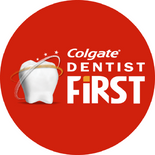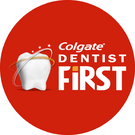Amidst the huge number of oral care devices, the basic manual toothbrush remains the go-to tool for dental biofilm (plaque) removal and overall oral hygiene. However, in our prestigious field of dentistry, we are well aware that achieving the full potential of a manual toothbrush is an art that requires a number of intricacies.
As dental professionals, you see firsthand the impact that brushing time, frequency, technique, and toothbrush selection have on each patient's effectiveness. In this article, we share our magnum opus—the top 10 hints that have been carefully chosen to help empower your patients to master the art of manual toothbrushing.
1. Illustrate the importance of good brushing habits

Dental care emphasizes effective brushing techniques and biofilm removal for suboptimal oral hygiene. Advanced approaches, like dye-based or fluorescent plaque indicators, help patients monitor and record their dental care. Performing a simple pass of a probe over an area with dental biofilm, removing it with the probe, and demonstrating it may be helpful. This advanced tactile approach motivates patients to take a proactive role in oral health, identifying areas for attention during recall visits, fostering responsibility and commitment.
2. Identify a suitable brush head design

Before recommending a manual toothbrush, do a comprehensive dental examination and make sure the brush head size corresponds to the patient's oral anatomy. Bristles with specialised designs, including tapered, angled, or multi-level ones, can enhance oral hygiene. Soft-textured cheek and tongue cleansers ensure a comprehensive clean. Patients with orthodontic appliances benefit from brushes with u-shaped bristles, as exemplified by the Colgate® Ortho Toothbrush, for efficient maintenance.
3. Recommend the right bristle hardness

According to the study results, brushes with soft and ultra-soft bristles, as exemplified by the Colgate® Gentle Ultrafoam Toothbrush, are deemed safer for soft tissues, making them a favourable alternative for people with sensitive teeth and ensuring an amalgamation of optimal comfort and efficacy
4. Consider ergonomics

For younger patients with limited manual dexterity, recommending a toothbrush with improved ergonomics, such as a chunkier handle and an anti-slip grip, is beneficial. This advanced feature not only enhances cleaning efficiency but also provides a secure brush grip, resolving toothbrushing-related hassles and encouraging consistent oral hygiene adherence. Colgate® Kids' Toothbrushes encompasses these attributes, offering a comprehensive solution for improved oral care in younger patients.
5. Coach your patients on brushing technique

Brushing procedures should be suggested according to individual oral health requirements and toothbrush type (e.g., Bass for adults, Fones for children, Charter for orthodontic patients). Correct pressure should be imparted to achieve complete cleaning without causing harm to soft tissues or bristles. Encourage healthier oral hygiene practices with engaging activities, like a training toothbrush and dentition mock-ups for young children. Providing patients with take-home materials or directing them to the DentisFirst website for comprehensive support in their oral health journey.
6. Consider brush appeal

Electric toothbrushes with vibrant colors, artistic designs, and popular characters attract children, promoting consistent oral hygiene practices and fostering interest in brushing. Colgate® Kids’ Electric Toothbrushes offer an engaging and enjoyable dental hygiene experience for kids by integrating these attributes seamlessly.
7. Emphasize timing and frequency

Timing and frequency play pivotal roles in optimizing biofilm removal by ensuring proper timing and frequency in brushing, a two-minute routine twice daily, for effective oral hygiene outcomes.
8. Promote good toothbrush hygiene

To maintain oral hygiene, it is important to recognize that brushing can contaminate toothbrushes with germs, dental debris, blood, and saliva. The Centers for Disease Control and Prevention (CDC) recommend thoroughly washing the toothbrush with tap water after use. It is not recommended to immerse the toothbrush in mouthwash or other cleaning solutions. To avoid microbe development, proper toothbrush storage is crucial. Allowing toothbrushes to air-dry and keeping them upright, not in confined containers or in contact with other toothbrushes, as recommended by the CDC for optimal dental care.
9. Encourage regular toothbrush replacement

Encourage patients to replace their manual toothbrushes every three to four months, since bristle wear affects cleaning efficacy. Soft-bristled brushes may wear quicker, necessitating replacement sooner if symptoms of wear appear. Rapid wear may suggest extremely rigorous brushing, necessitating further analysis and, if necessary, guidance.
10. Share the Golden Rule!

Emphasise the cardinal rule of toothbrushing to your patients: never share their toothbrushes, as it can lead to cross-contamination and compromise oral health. Recommend colour-coded brushes and expert tips for optimising manual toothbrushing techniques for better oral health outcomes.

